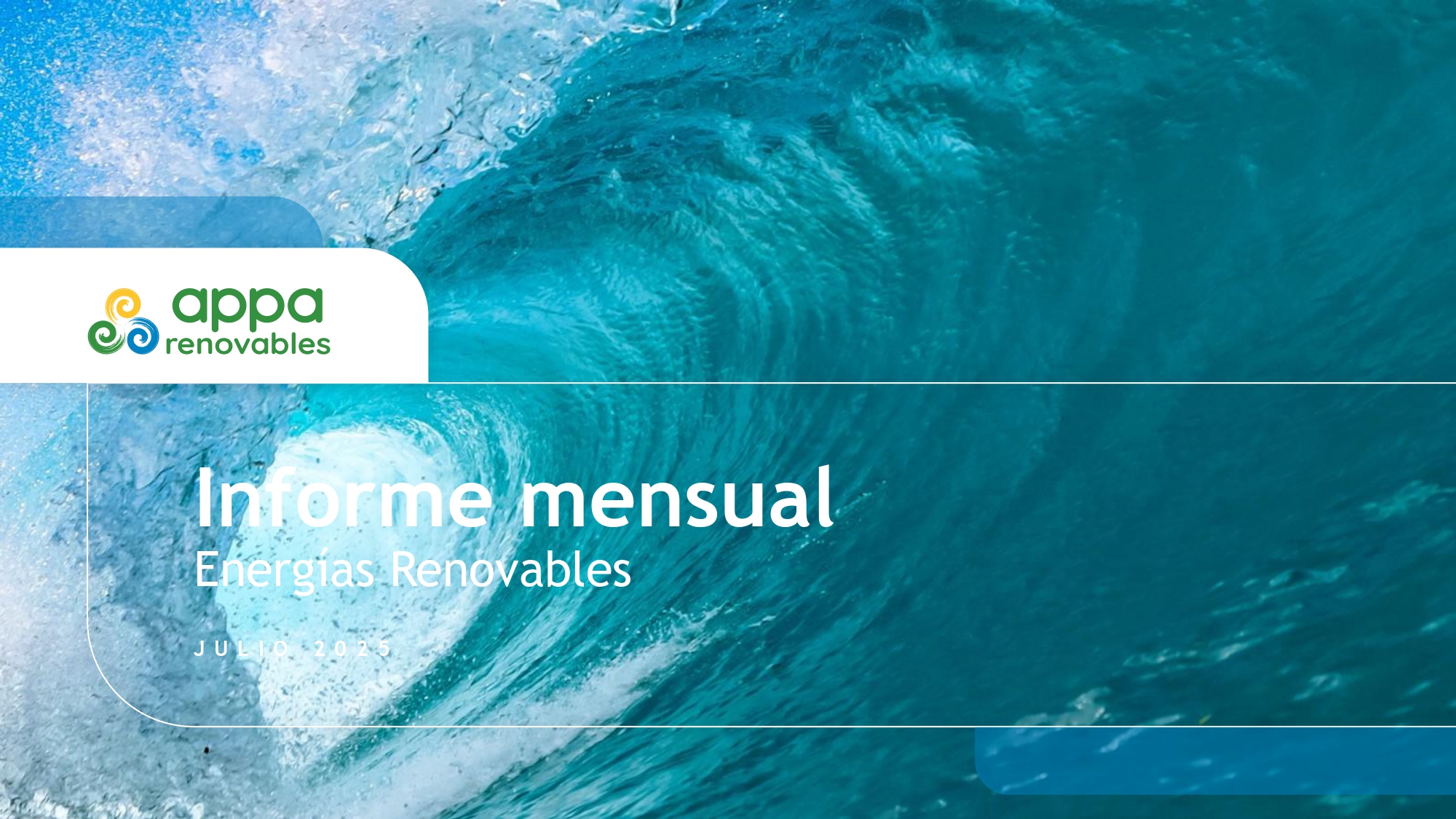APPA Renovables’ monthly report for July 2025 highlights a milestone in the penetration of clean energy in Spain. During the month, renewable generation reached 13,871 GWh, representing 55.1% of the national electricity mix.
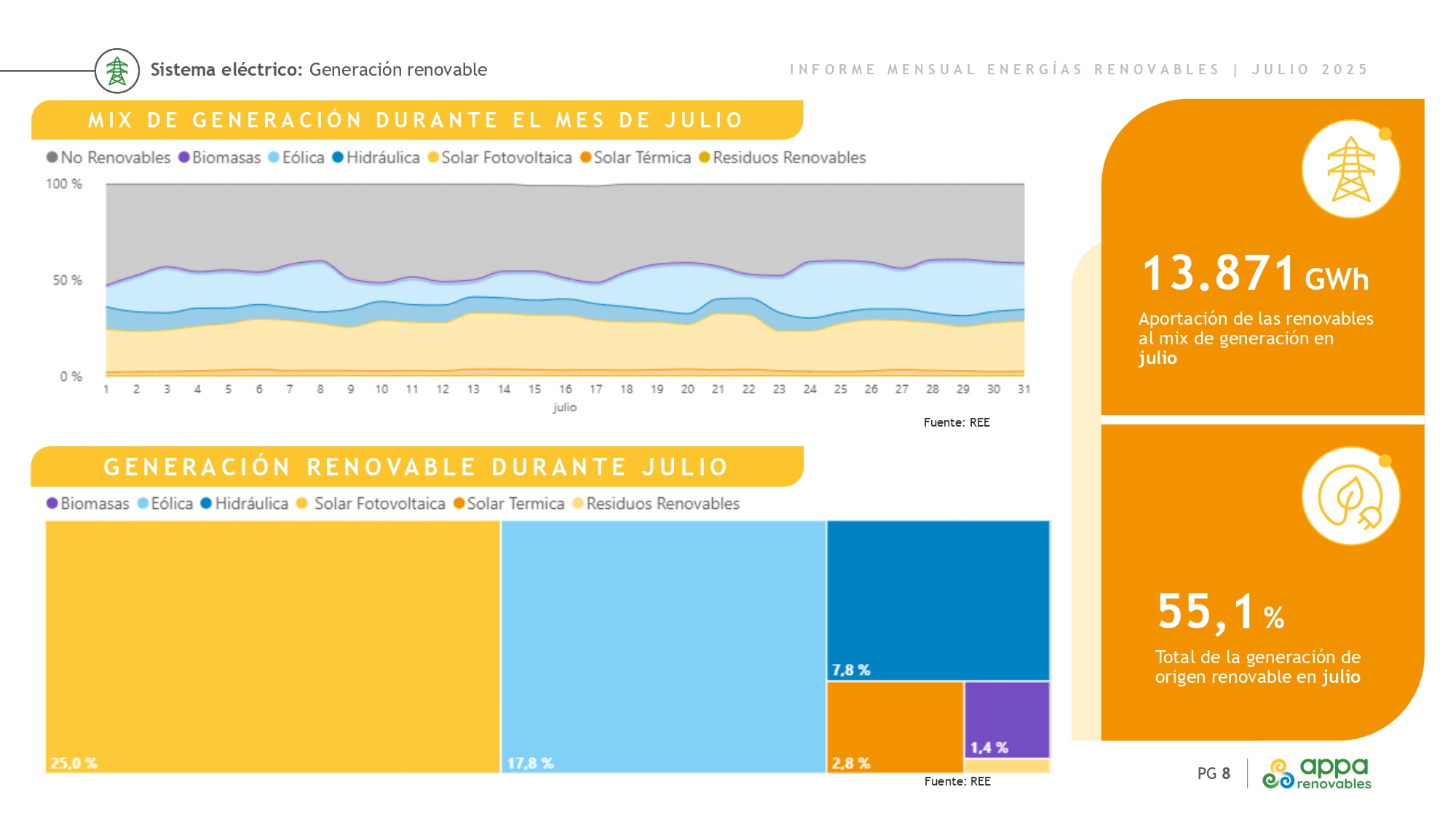
Solar PV consolidated its position as the leading renewable source of electricity, contributing 25% of the total. It was followed by wind, with 17.8%, and hydro, with 7.8%. This distribution confirms the growing relevance of solar PV, which now accounts for one in every four units of energy generated in the country.
At the same time, electricity demand rose to 23,249 GWh, a 2.1% increase compared with the same month in 2024. The rise in consumption coincided with greater use of gas in the power sector, which grew by 31.7% year-on-year to cover demand peaks not met by renewables.
Market dynamics reflected this trend. The average wholesale electricity price stood at €70.01/MWh, 3.18% lower than in July 2024. However, the high penetration of renewables caused sharp fluctuations: the minimum price was recorded at 15:00 at €27.88/MWh, while the maximum reached €123.18/MWh at 22:00.
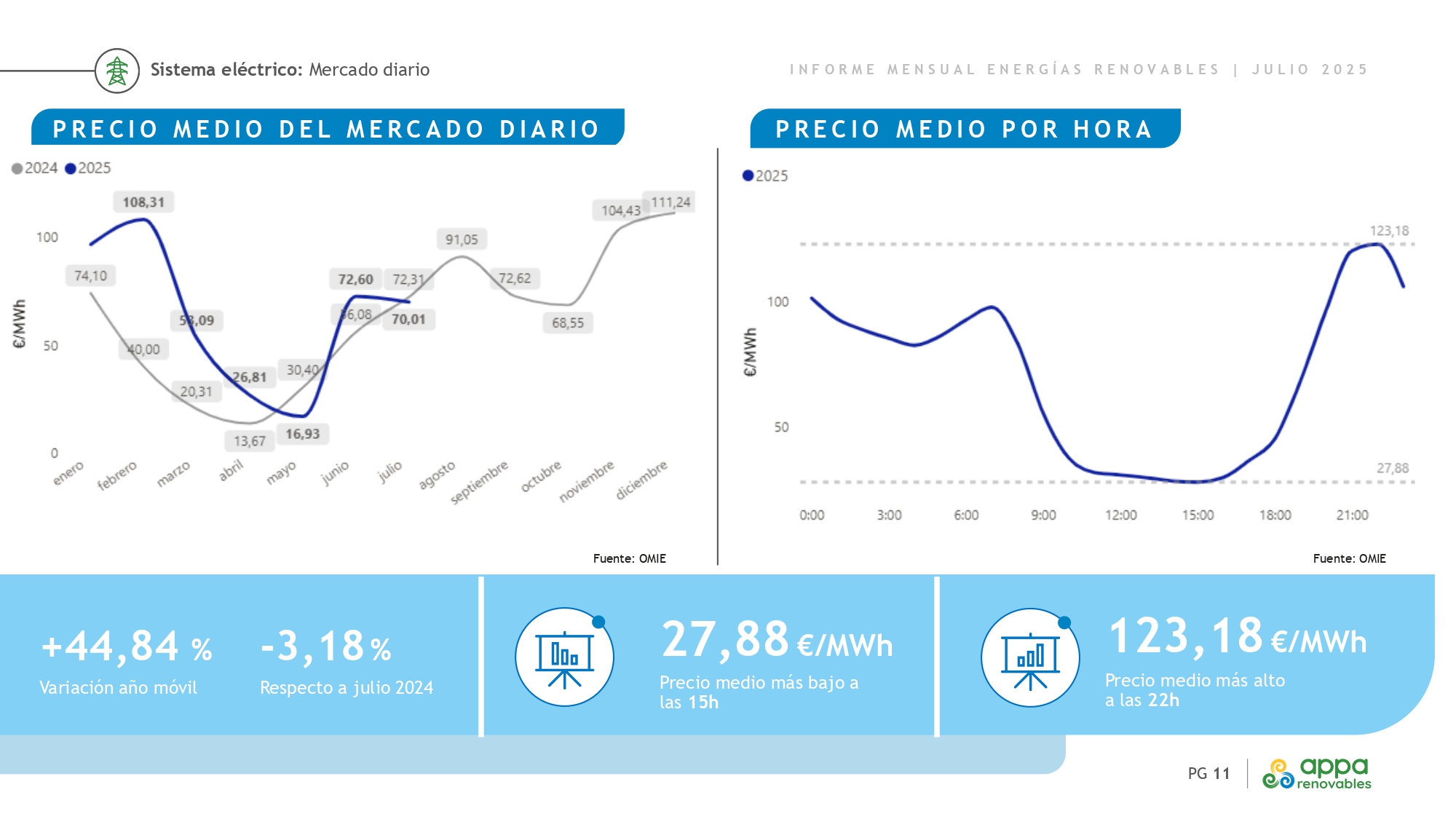
The report also highlights that July saw 30 hours with zero or negative prices, representing 12.52% of all hours in 2025 so far. In addition, there were 131 hours with very low prices, between €0 and €30/MWh, reflecting the strong pressure exerted by renewables on the wholesale market.
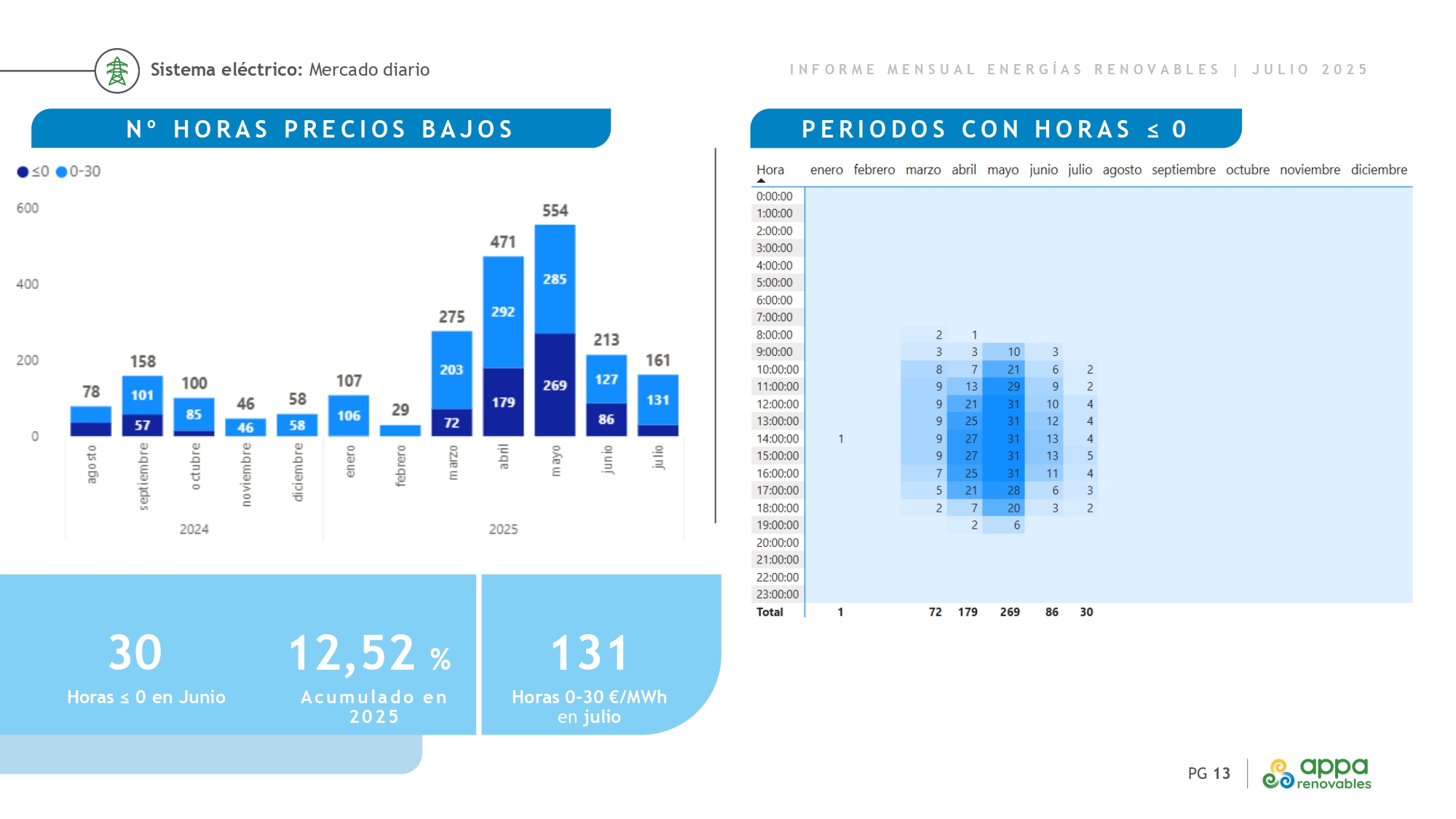
Another relevant aspect is the performance of technologies in the market, measured through the capture price index. Solar PV recorded a factor of 0.6, below the average, while wind reached 1.03 and biomass 1.05, showing better alignment with hourly price profiles.
In terms of grid management, balancing services had an average cost of €15.35/MWh, representing a 77.9% increase compared with July 2024.
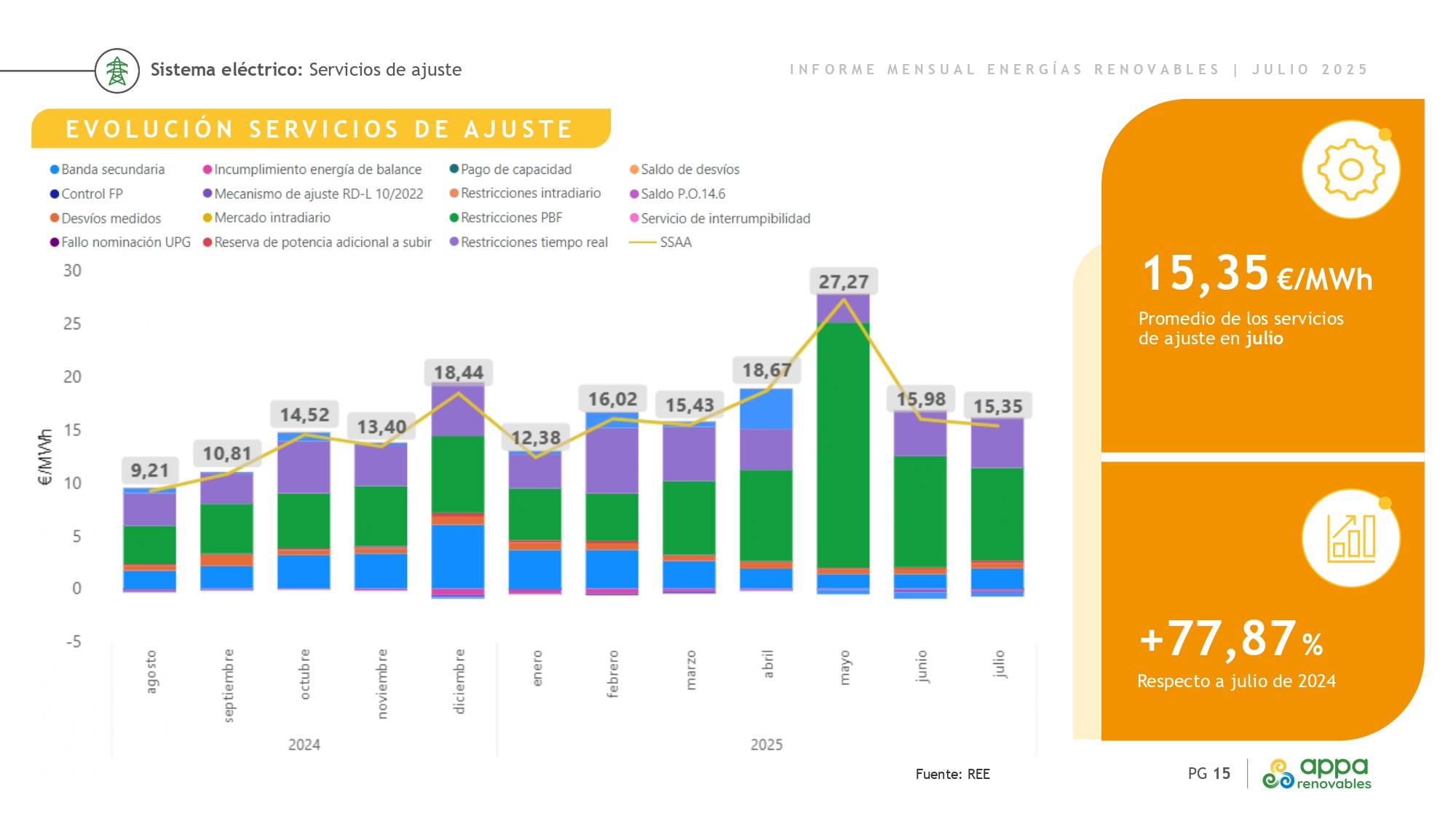
On infrastructure, the report notes that there are 386 nodes reserved for generation and TSJ auctions, with a total capacity of 164,034 MW, as well as 70 nodes allocated to demand. This volume of access points illustrates the scale of renewable development projected in Spain.
Finally, the balance of international electricity exchanges was negative, with a net import of 1,419.6 GWh, as imports reached 2,187.2 GWh, while exports were limited to 767.6 GWh.
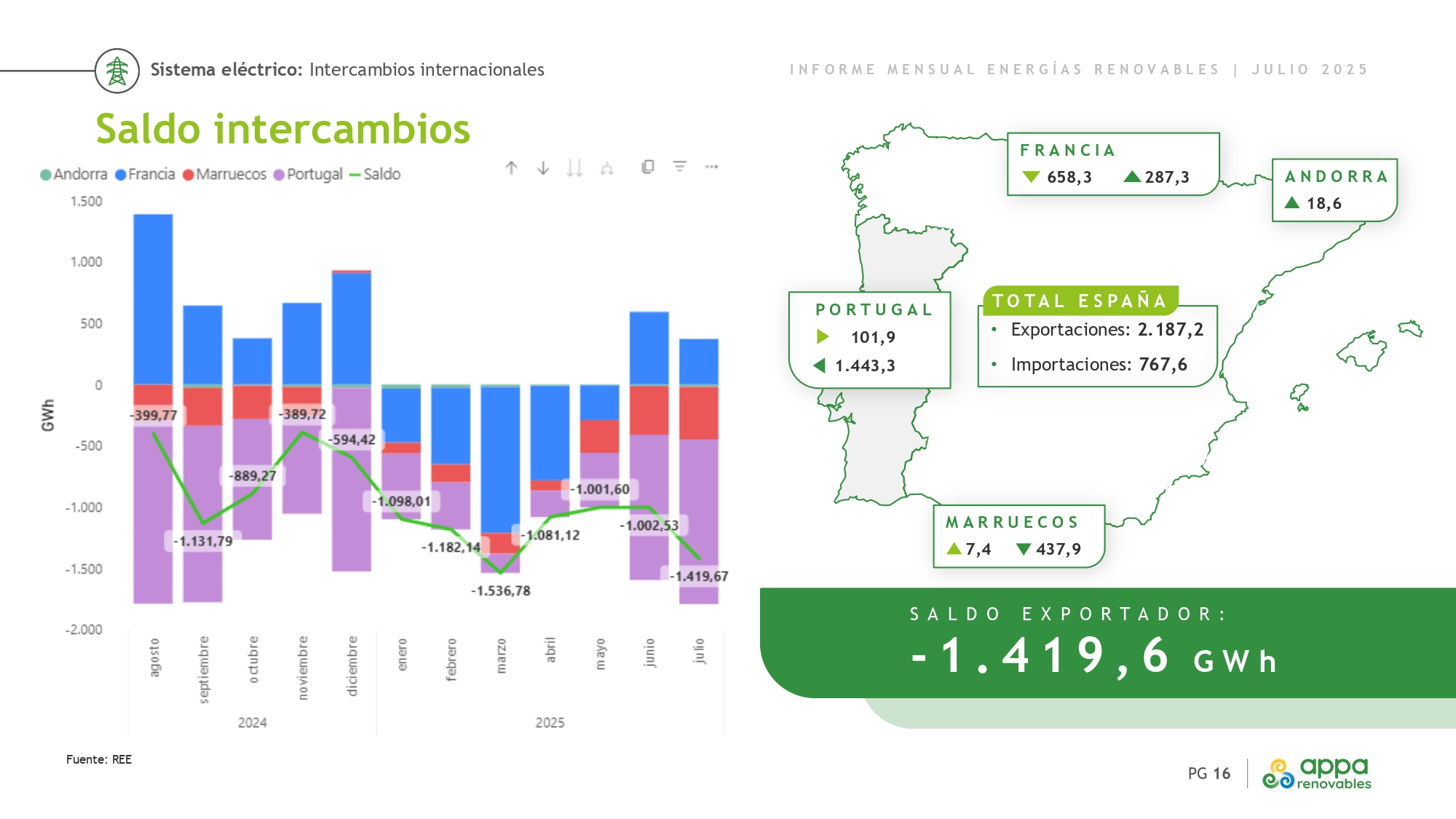
Hydropower reserves stood at 70.8%, up 7.7% year-on-year, a figure that strengthens the contribution of this source to the electricity system in a context of high renewable generation.














